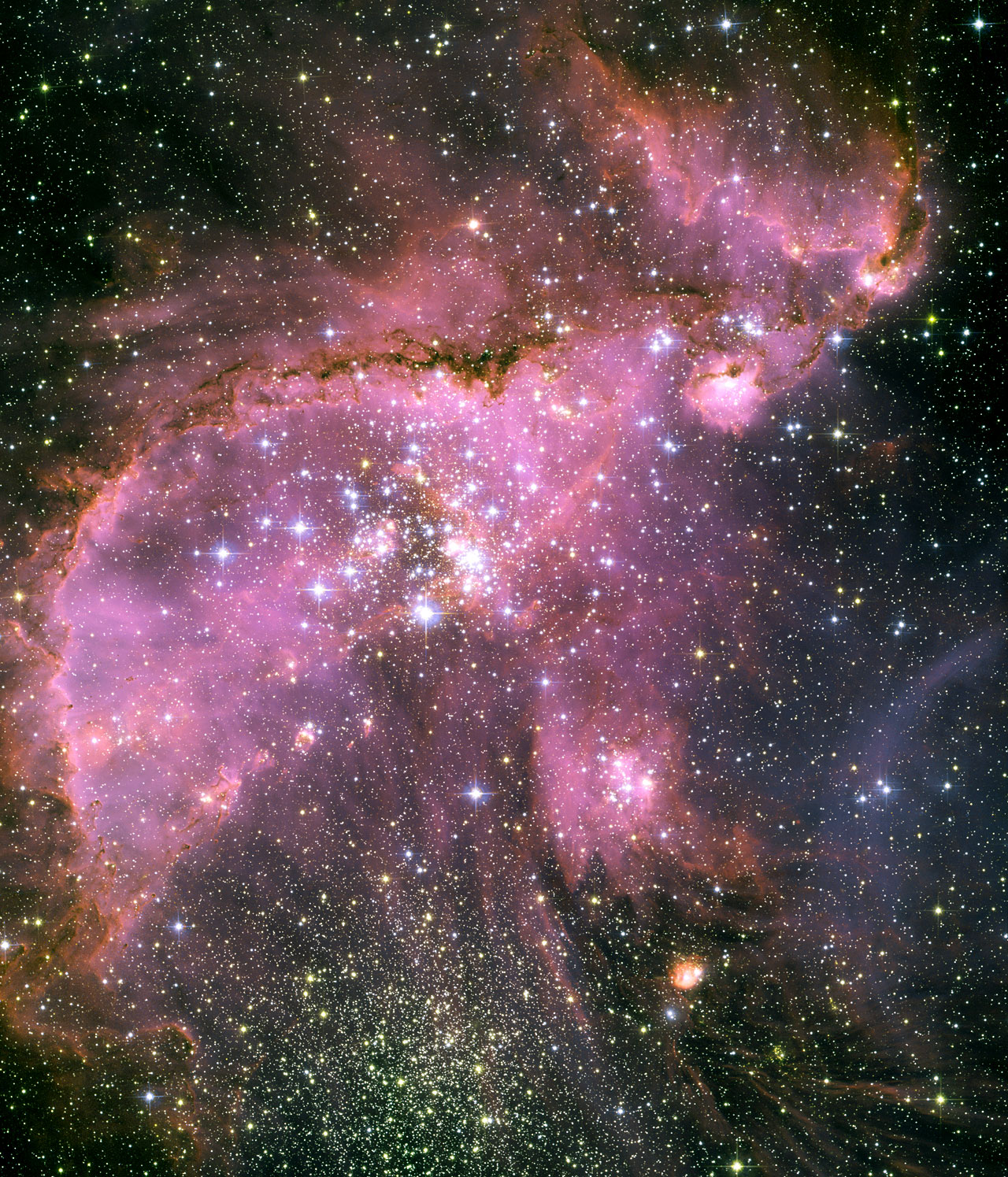







| BOOKS | F. A. Q. | ARTICLES | TALKS | ABOUT KEN | DONATE | BEYOND OUR KEN |
|---|
By Ken Croswell
Published on New Scientist (April 18, 2018)

Credit: Hubble Space Telescope. NASA, ESA, and A. Nota (ESA/Space Telescope Science Institute).
Our galactic neighbour is starting to fall apart after colliding with a nearby galaxy.
The Large and Small Magellanic Clouds are the two brightest galaxies that orbit our own, lying just 160,000 and 200,000 light-years away. And the larger of the two is sucking in material from its smaller counterpart, pulling the smaller galaxy apart star by star.
Paul Zivick and Nitya Kallivayalil at the University of Virginia in Charlottesville and their colleagues used the Hubble Space Telescope to track the motions of stars in the Small Magellanic Cloud relative to background quasars.
The researchers didn't see the galaxy rotating. Instead, “parts of the outer regions of the Small Magellanic Cloud are getting pulled away by the Large Magellanic Cloud,” Zivick says. Stars in the southeastern and southwestern outskirts of the smaller galaxy are streaming away from its centre.
Moreover, by tracing the paths of the galaxies back in time, the astronomers reach a dramatic conclusion. "The two galaxies smashed into each other," says team member Gurtina Besla at the University of Arizona in Tucson.
The collision occurred just 150 million years ago. The smaller galaxy skirted only about 25,000 light-years from the larger galaxy's centre, hitting its disc.
“I find the result quite believable, and the implications are very interesting,” says Knut Olsen at the National Optical Astronomy Observatory in Tucson, Arizona.
As a result of this cosmic collision, the Small Magellanic Cloud is in distress, losing both stars and gas, and Besla predicts it will completely change its type. Right now it's an irregular galaxy, full of gas that's spawning the bright new stars that set it aglow. But she says the galaxy will lose its gas and eventually become a dwarf elliptical galaxy, a duller type that gives birth to no stars at all.
It's hard to know how much of the Small Magellanic Cloud will disintegrate. That's because there's uncertainty over the mass of both the Large Magellanic Cloud and the Milky Way. But if the Small Magellanic Cloud is still gravitationally bound to its bigger brother, and if it has another collision, it's probably best to avoid setting up camp anywhere nearby unless you want to end up hurtling through intergalactic space.
Despite the recent trauma, Besla says the Small Magellanic Cloud will survive, because it has plenty of dark matter whose gravitational pull will retain some of its stars.
Ken Croswell earned his Ph.D. in astronomy from Harvard University and is the author of The Alchemy of the Heavens and The Lives of Stars.
"An engaging account of the continuing discovery of our Galaxy...wonderful." --Owen Gingerich, The New York Times Book Review. See all reviews of The Alchemy of the Heavens here.
"A stellar picture of what we know or guess about those distant lights."--Kirkus. See all reviews of The Lives of Stars here.
| BOOKS | F. A. Q. | ARTICLES | TALKS | ABOUT KEN | DONATE | BEYOND OUR KEN |
|---|